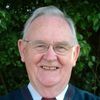Christian Science, or to use the official title, the Church of Christ, Scientist. Their world headquarters is in Boston, Massachusetts, USA. Here, too, is their ‘Original Mother Church’, built in 1894. The group operates in 70 countries and has over 2,200 branch churches. Most of the ‘churches’ are found in English-speaking countries: the USA, Canada, UK and Ireland, Australia, New Zealand and South Africa. The next largest number are in German-speaking countries.
Different
But why call them a cult? They are different from the more destructive and mind-controlling cults like Scientology and even some Exclusive Brethren groups. The point needs to be emphasised. For example, Christian Science rightly regards religious freedom as ‘a fundamental right of all’. Nor do they seek to brainwash members and isolate them from society. They also insist that they do not use hypnotism, chants, rituals or esoteric practices. However, some ex-members have now concluded that the group is cultic but that it functions without many of the obvious controls such as physical isolation and diet used by other groups. I will return to this subject in a later article.
At this point, I am using the term ‘cult’ in relation to Christian Science in a primary sense, to refer to a serious deviation from orthodox, biblical Christianity. Sociologists are not so interested in this usage of the term because some of the typical and worrying cultic features such as brainwashing, exploitation, abuse, protest, withdrawal and violence are absent. My criterion for this primary use of the term ‘cult’ is, therefore, theological and biblical rather than sociological.
Another factor to be born in mind is that Christian Science belongs to a group of older and more traditional cults like Christadelphians and Jehovah’s Witnesses, which tend now to be accepted as harmless features of the religious scene.
Active propagation
Why, then, should we include Christian Science in this series of articles? One reason is that there are many branches in the United Kingdom and the movement is actively propagating its teaching. Admittedly, Christian Science has been in decline for several years. Between 1985 and 1995, for example, 257 branch churches and 97 reading rooms were closed.
Membership in the United Kingdom has fallen from 15,000 in 1980 to 9,500 in 1995. Some ex-members have grouped themselves together as ‘United Christian Scientists’. Despite these developments, the teaching of Christian Science has influenced individuals in Britain as well as in other countries. Another reason for considering Christian Science is its indirect influence on certain areas of Pentecostalism and other groupings such as the ‘Faith Movement’. Let me explain.
Names like Kenneth Copeland, Morris Cerullo, Benny Hinn, Frederick Price and Kenneth Hagin are well known in some circles. Sadly, their teachings are dubious and often heretical. Their big themes are faith, prosperity, wealth, healing, identification and ‘revelation knowledge’. All the above persons recycle, in one form or another, the teaching of Hagin, commonly regarded as the founder of the Faith Movement. However, researchers like D. R. McConnell have shown conclusively that Hagin ‘copied extensively’ from the writings of E. W. Kenyon.
Ideas from Baker-Eddy
This point is important because the influences on Kenyon himself included that of Christian Science. There is ample evidence for this claim. John Kennington, for example, recalls a conversation in which Kenyon admitted he had freely used ideas from Mary Baker-Eddy, the founder of Christian Science. Ern Baxter, who knew Kenyon well in later years, also confirms that Kenyon was ‘influenced’ by Baker-Eddy’s teaching.
1. In fact, Kenyon was ‘widely read’ concerning other related cults and ideas which are often classified under the title of ‘New Thought’.
2. And Kenyon also used the term ‘spiritual scientist’.
3. In later articles, we will pursue the links between New Thought, including Christian Science, and the contemporary Faith Movement. The following statement from the web-site of Christian Science should alarm us: ‘In recent decades, a number of main-line Christian leaders have extracted the Christian Science concept of Divine Mind … and grafted it on to traditional Christian belief’. That should concern us deeply.
History
How did Christian Science begin? The history of the cult centres around Mary Baker-Eddy (1821-1910). She was brought up by God-fearing Calvinistic parents who were members of a Congregationalist Church in the USA. At an early age she rejected her parents’ theology.
Constant ill-health, unpleasant periods of residence with friends and relatives, and the death of her first husband; together with deliberate estrangement from her only child and an extremely unhappy second marriage followed by divorce; all contributed to her anguish and disillusionment.
There were two incidents, in particular, which had a profound influence on her thinking. The first concerned a ‘healing’ which she supposedly experienced through Phineas Quimby. The latter’s approach to ‘healing’ was essentially non-religious and auto-suggestive. A second incident was more important and occurred in 1866. This was when she fell on a frozen pavement and hurt herself. Concerning the extent of her injury there are conflicting accounts, but Mary Baker-Eddy claims that at this time the principles of healing were revealed to her and she applied them for her own recovery.
Church formed
Convinced that God had healed her, she spent several years reflecting on the subject and in 1875 expressed her understanding of the subject in Science and Health with the Key to the Scriptures. Consistent with other cult founders, Mrs Baker-Eddy insisted that she was a unique channel of revelation and the custodian of the key for understanding the Bible. Misusing Revelation chapter 12, she claimed that she was the woman mentioned there and ‘the God-appointed messenger to this age’. She is referred to as the ‘Discoverer, Founder, and Leader of Christian Science’.
In 1879 Mrs Baker-Eddy and a group of followers agreed to ‘organize a church … which should reinstate primitive Christianity and its lost element of healing’. This ‘church’ was reorganised in 1892.
Each local group is democratically governed and ‘is a lay church in which every member had equal standing…’ There are no ministers and they prefer to ‘turn to prayer and these two books [the Bible and Science and Health] for counsel and healing’. They claim that more than 50,000 authenticated testimonies of healing have been published in their periodicals during the past 112 years, with medical verification of some of them.
Assessment
Over the next two articles it will be necessary to outline, and then expose, the errors of Christian Science. I must warn you that their teachings are far removed from those of the Bible. For example, in their view God is not a person but merely Mind and the universe an extension of this Mind. In denying Christ’s deity, they insist that Jesus Christ died only to show the unreality of death. ‘Salvation’ is, they assert, gradual and continuous, evidenced through healing. These ideas represent major denials of biblical teaching and need to be challenged.
Reading the Bible
There are some ex-members who are now actively challenging the cult, both on biblical and theological grounds. Linda Stecher Kramer is one such person. She spent the first thirty years of her life in Christian Science and was committed to the group. In her early thirties she felt a deep sense of need to study the Bible and without using Science and Health. Providentially, she met a Christian family at this time who witnessed to her concerning the central themes of Christianity. Sadly, the message seemed ridiculous to her and naive.
However, Linda continued reading the Bible and several months later had another discussion with her Christian friends about Christianity. They urged her to keep on reading the Bible. And then, soon, God met with her. Reading Romans 3:23-25 she reports, ‘Everything my friends had said seemed to be wrapped up in that one passage. I suddenly realised that Jesus had not gone to the cross to prove the unreality of sin, disease and death, but to pay for my sins. “For all have sinned…” … I caught a glimmer of truth’.
In a footnote to Christian Scientists on her web-site, Linda emphasises that the original Greek words for ‘redemption’ and ‘atonement’ (or propitiation) in Romans 3, involve payment for sins and reconciliation with God. She adds, ‘Atonement deals with restoring a broken relationship with God rather than referring to a pre-existing “at-one-ment” with Him’.
Within a short time she had trusted in the Lord Jesus Christ. ‘Finally,’ she testifies, ‘I had to concede that Christian Science contradicts the Bible rather than elucidates it. I had no choice but to leave’.
1. For confirmation of these facts, see, for example, A Different Gospel, D. R. McConnell, Updated Edition, pp.25-26, Hendrickson Publishers, 1995.
2. The Unity School of Christianity as well as spiritism are two examples.
3. op.cit. p.44.









